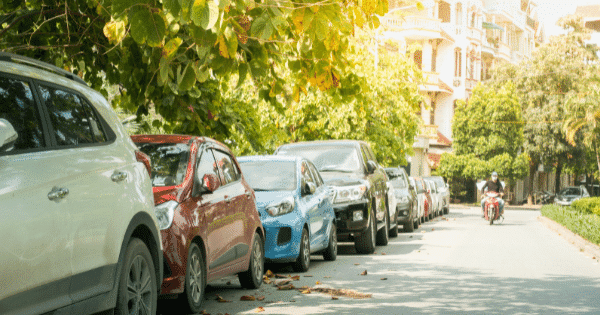Have you ever passed up a spot because it required you to parallel park? Don’t worry, you’re not alone. The anxiety/stress that comes with parallel parking is well known. But it doesn’t have to be.
Whether you’re teaching your teen how to parallel park or you simply want to brush up on your technique, here’s a 5-step process to parallel park like a pro.
1. Find a parking spot.
Look for a spot that seems big enough. You will need a space about one and a half times the length of your car. It takes practice to estimate the right size so don’t get discouraged. If you’re not sure if the spot is big enough, pull away and find another.
2. Signal and get in position.
You will be pulling up alongside the car in front of the empty spot. Check your mirrors and your surroundings for other cars and pedestrians. Turn on your right turn signal. Position your car so that its center is even with the other car’s rear bumper. You should be parallel, about 2-3 feet away from the other car.
3. Turn the wheel to the right and reverse.
Sit up tall and turn your body 90 degrees. Again, check your surroundings. When all is clear, put the car in reverse and turn the steering wheel sharply toward the curb so you are approaching at 45-degree angle. Use your car’s backup camera to help guide you. Stop when you see the full front of the car in the back of you in your driver’s side mirror. If your right rear wheel taps the curb, move forward a bit.
4. Turn the wheel in the opposite direction to straighten out.
You can’t continue on that 45-angle without hitting the curb. That means that sometime during your reverse, you will need to stop turning toward the curb and start turning in the other direction. For most cars, you do this when your passenger’s side mirror is in line with the rear bumper of the car in front. As you turn the wheel in the other direction, continue backing up slowly until your car is parallel to the curb.
5. Straighten and align.
You want to make sure you’re between 12 and 18 inches from the curb. Your backup camera will give you an idea of how close you are. You also want to be centered in the spot so that you, and the cars in front and behind you, can get out easily. Creep forward until you are centered. Congratulations! You just parallel parked successfully.
Hi-tech help from your vehicle
When they first came out, backup cameras were revolutionary in helping with parallel parking. The latest technologies are even more so. Parallel parking assist is available on some newer models in a variety of price points. These systems use a camera and sensor-based guidance system that steers the car into the space with little help from the driver.
Simply drive past a parking spot and the car will notify you if it is large enough. Then, select the spot, put it in reverse, engage the parallel parking assist option, and remove your hands from the wheel. Self-parking cars can even do it themselves, and the driver is optional. You can even stand outside the car and use a remote control!
Quick Parallel Parking Safety Tip: Remember to never park in front of a hydrant or fire lane.
Drive safe!
This article is furnished by California Casualty, providing auto and home insurance to educators, law enforcement officers, firefighters, and nurses. Get a quote at 1.866.704.8614 or www.calcas.com.
- Graduation – When to Remove Your Child from Your Auto Policy - May 18, 2023
- How to Prevent Catalytic Converter Theft - May 17, 2023
- How Much Does Home Insurance Cost? - May 17, 2023


Great tips.